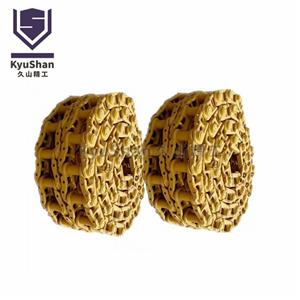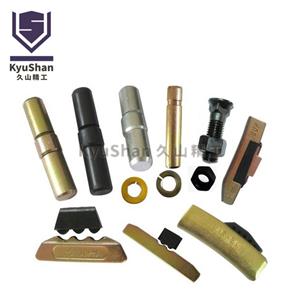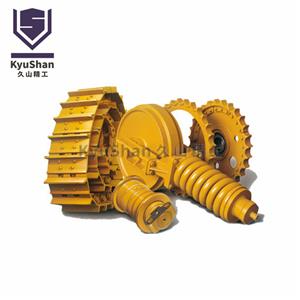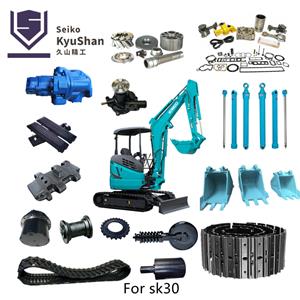Repair of Excavator Parts Oil Cylinder Failure
The excavator cylinder moves repeatedly, and its seals are divided into an outer leakage part (shaft seals) and an inner leakage part (hole seals). External leakage part: It is installed on the cylinder head. If it is damaged, the hydraulic oil will leak directly from the cylinder. The inner leakage part: installed on the piston, if damaged, it will cause the excavator to drop the arm.
Many people think that the main oil seal is the most important part of the leakage, but this is not the case. In the seal, only the price is different, but its value is different.
1. The main oil seal is mainly used to seal the oil, and its importance is self-evident. The main oil seals of several major brands on the market are actually easy to use, and they are almost the same, but each brand has different models. Therefore, when choosing an oil seal, you should decide according to your actual situation. If the oil cylinder is relatively old, the main oil seal of the reinforced excavator accessories should be better. Or oil seal with double lip design. If it is a new model or the pump core has just been processed, try to avoid using the reinforced main oil seal and the main oil seal with too high hardness.
2. Buffering, its contribution cannot be underestimated. The buffer is installed in the cylinder head, and its main job is not to seal the oil (but since it is a seal, it has a somewhat oil-sealing function). Its main job is to buffer oil pressure, and it is the "hardest" one of all the seals in the leakage part. It faces high pressure and high temperature every day. So I personally think that a set of oil seals will not leak oil, the main oil seal has the final say, and when the oil leaks buffer it is the final decision. The "R" chamfered surface must be combined with polyurethane. Otherwise, even the best things will be useless.
3. Dustproof, it is installed outside. Its working environment is changeable. Its main job is to prevent external dust, water and other debris from entering the cylinder. There are two kinds of dust-proof materials on the market, but no matter which kind, the outer lip should not be too soft. By the way, some cylinders are designed without a snap ring groove in the dust-proof position. When encountering this kind of oil cylinder, it is recommended to tap the iron sheet in a symmetrical position after installing the dustproof to make it slightly deformed. to prevent dust from falling off.
4. Cups, something that gives everyone a headache. The price is very cheap. But disassembly is not easy. So many repairmen do not like to change cups. But this bushing is also a key excavator accessory. Replace the lubricating coating a little when it gets scratched.
Check whether the hydraulic cylinder is due to poor installation accuracy:
1. The installation quality of the hydraulic cylinder should be improved.
2. If the piston rod and the piston are not concentric, check the coaxiality of the two; when the piston rod is bent, straighten the piston rod. The cooperation between the piston rod and the guide sleeve should be the cooperation of H8/f8, which should be strictly in accordance with the standard and quality standards. The manufacturer's qualified sealing ring and V-shaped sealing ring should be used to adjust the sealing friction to a moderate level.
3. Check whether the hydraulic cylinder end cover seal is pressed too tightly or too loosely:
Adjust the sealing ring of the excavator accessories so that it is not tight or loose, and the guide sleeve is concentric to ensure that the piston rod can move back and forth by hand (or just tap with a hammer), and a layer of oil film is slightly hung on the piston rod.




